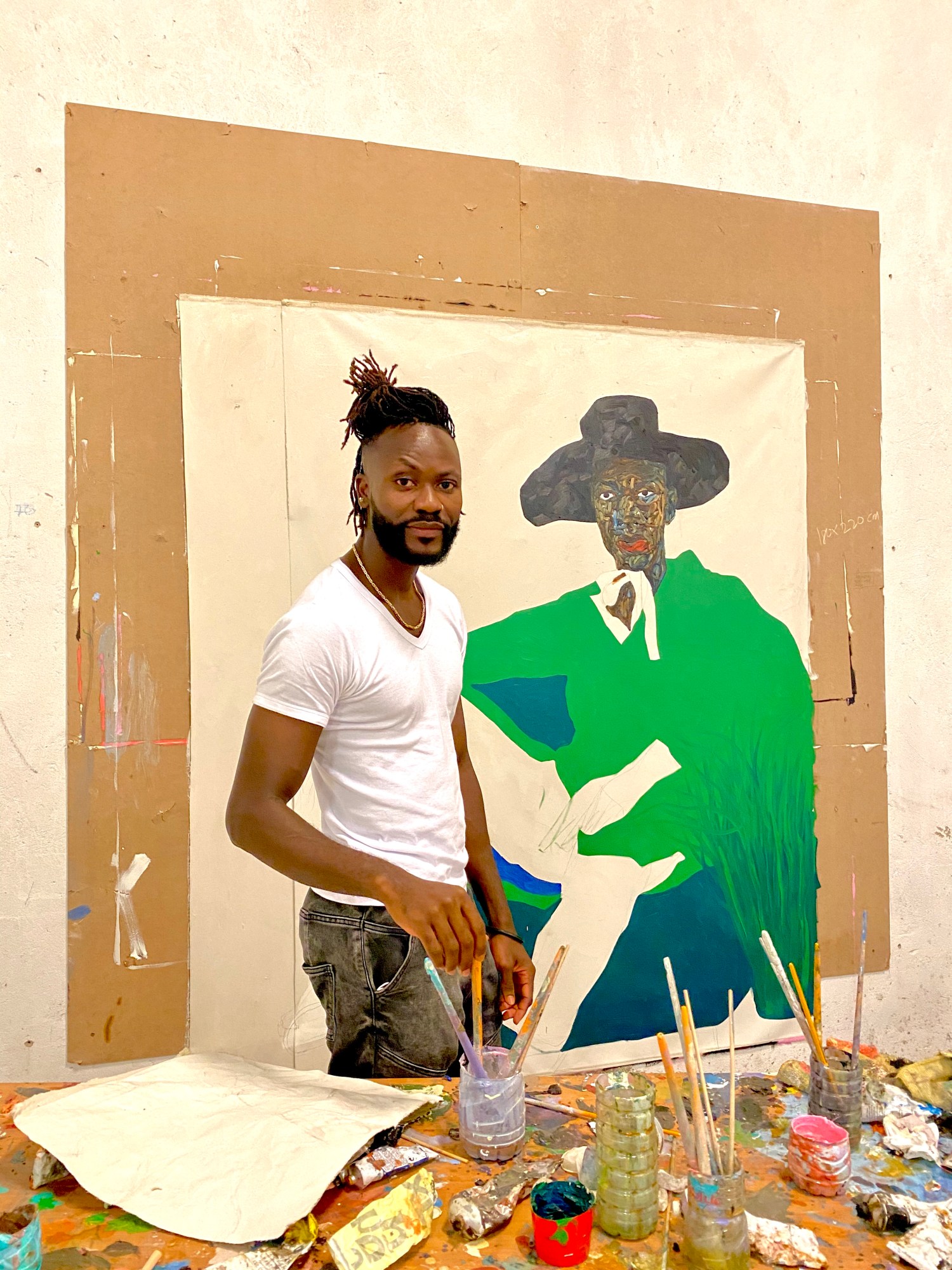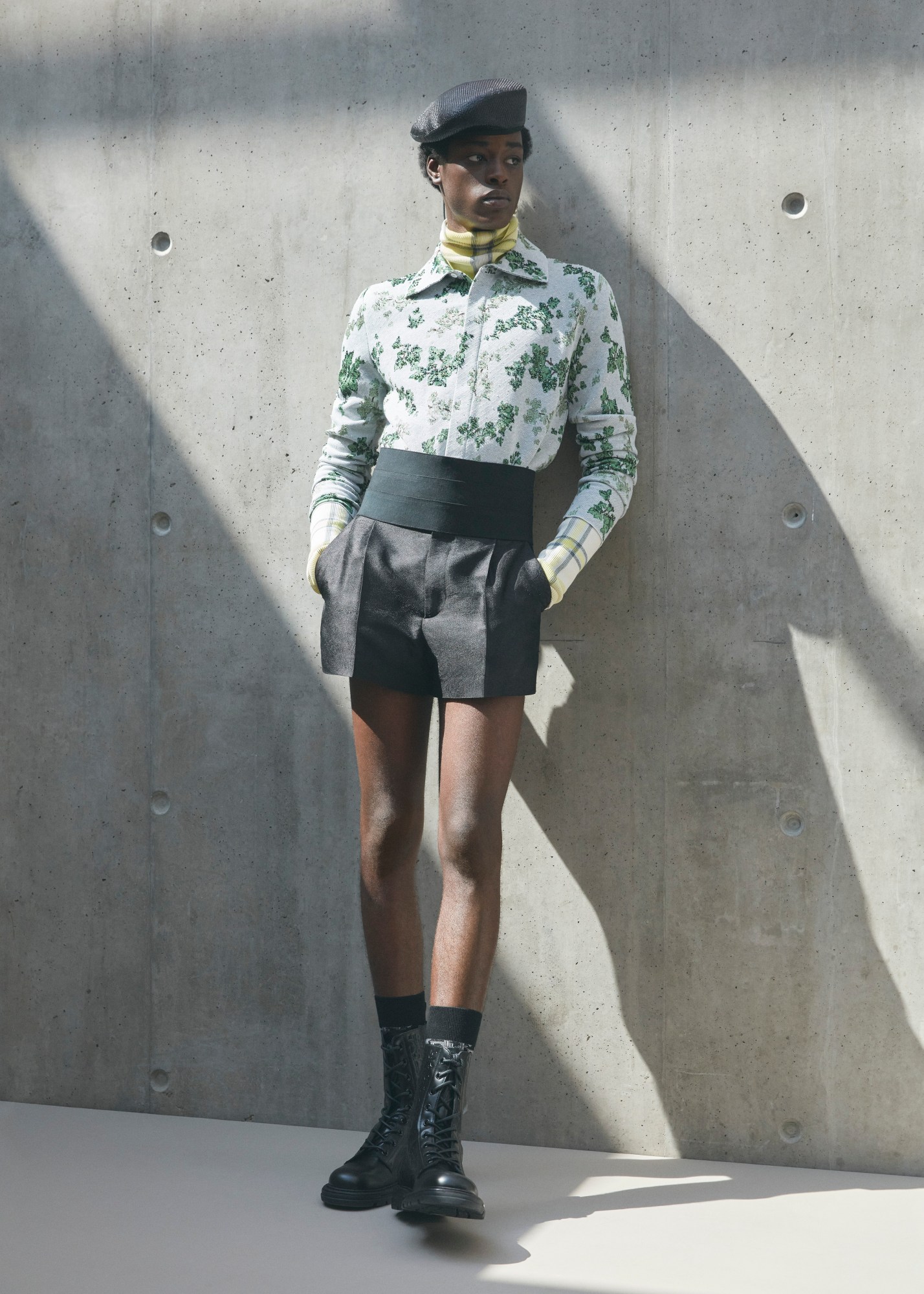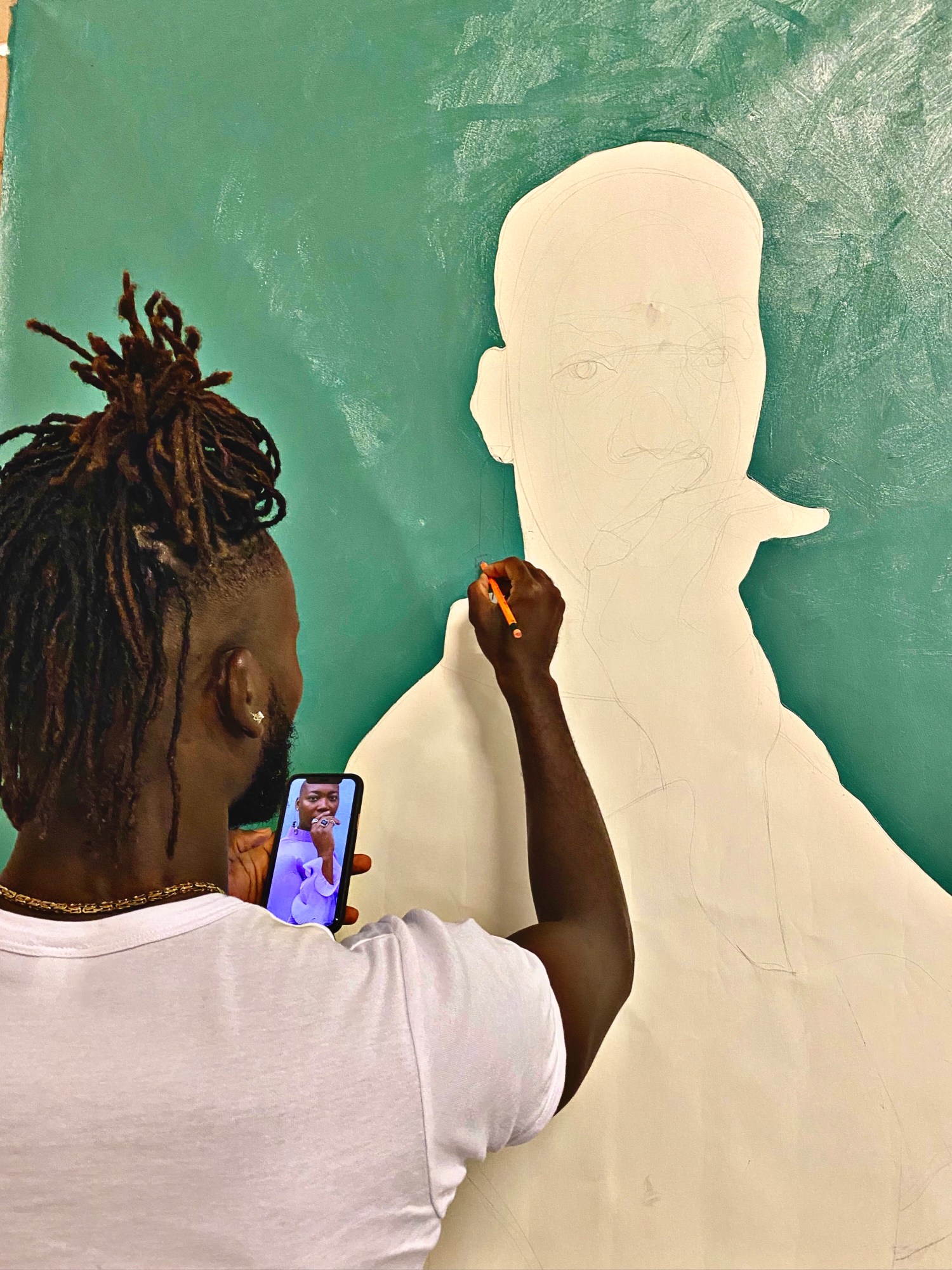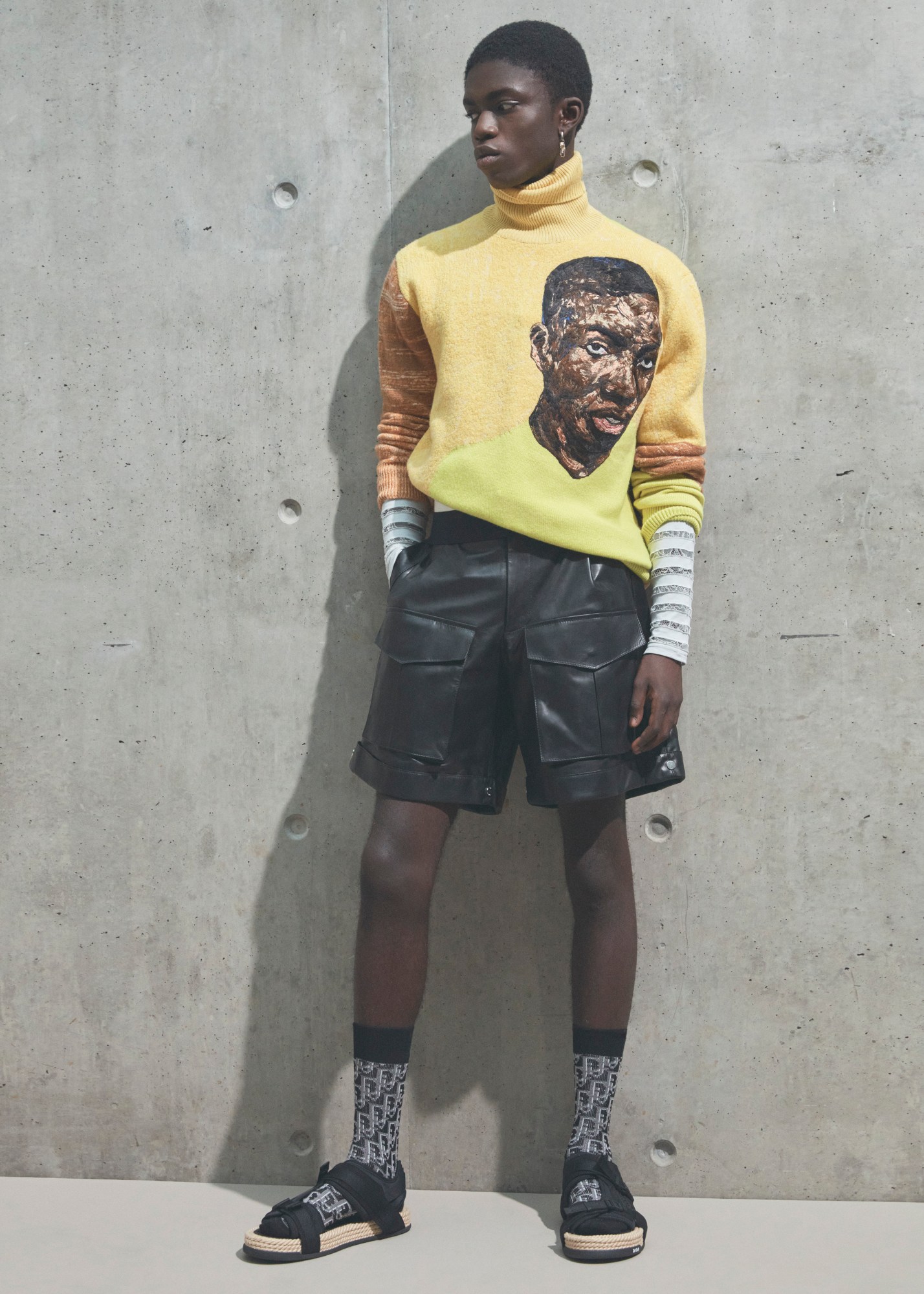Art has long served as a vehicle for social change in Africa, with artists from across its 54 countries engaging with issues of visibility, transparency and representation in bold yet sensitive ways. They’re on the frontline of the fight against the negative stigma and stereotypes that have long been associated with the continent, proudly showcasing the beauty, cultural wealth and talent to which it is home.
Over the past decade, Ghana, in particular, has emerged as a veritable force in the international art world, producing artists including Larry Amponsah, Attukwei Clottey Serge, Godfried Donkor and Amoako Boafo. The latter name is perhaps the most likely to be familiar to you, given his recent collaboration with Kim Jones on the Dior Men’s SS21 collection. But before then, he had already established himself as one of the most celebrated contemporary painters of African descent.

Through his unique style of figurative finger-painting, Amoako’s work explores and celebrates themes of Black masculinity and identity, with an emphasis on portraying his subjects in a nuanced, authentic light. Moreover, it expresses a sense of shameless vulnerability and intimacy that is often absent from depictions of Black men in contemporary art. It’s something you can’t help but be struck by in works like The Green Beret (2020), one of a selection that featured in the Dior collection presentation that debuted a fortnight ago.
His interest in painting harks back to when he was a teenager, when he would compete with his friends to see who was best at copying cartoons. His training became more formal when, in 2004, he enrolled at Ghanatta College of Art and Design, eventually moving to Vienna to study an MFA at the esteemed Academy of Fine Arts. Graduating in 2017, and winning the Walter Koschatzky Art Prize the same year, Amoako set up a studio in the Austrian capital, where he lives (as well as in Accra) with his wife Sunanda Mesquita, a curator and fellow visual artist.
It’s there that we visited Amoako, who’s been spending lockdown working from his hometown base. Speaking soon after the presentation of his collaboration with Kim Jones, we sat down with the Ghanaian painter in his studio to discuss the process behind the collection, how fashion informs his practice, and the potential for the African contemporary art market’s growth.

Hi Amoako! Tell us, what were the main inspirations for your collaboration with Kim Jones?
Kim Jones has a deep connection with Africa. He grew up travelling the continent, living in Ethiopia, Botswana, Kenya, and Ghana; his dad was a hydrogeologist. This whole collaboration came to fruition when he saw my work in Miami, during Art Basel last December. Kim then came to visit me at my studio here in Ghana. At its heart, the inspiration for this collaboration was really about Kim portraying his love for Africa, which he inherited from his dad.
While at my studio, he was captivated by a painting of a young man with an ivy print shirt that I had done. The collaboration then began to focus on translating or transferring my pre-existing paintings onto fabrics and through the styling. I was both excited and curious to see how Kim would creatively transfer my finger painting and gift wrap paper technique, as well as my brushstrokes, onto fabric.
He is also ensuring that this collection will leave a lasting legacy by supporting my new foundation that is going to promote young artists in Accra. Kim’s collaboration with me is so genuine, and it’s very inspiring to me. It came together beautifully, I must say.
How would you describe your relationship to fashion? How has it inspired and informed your work?
I love fashion! There’s something about looking good that makes you feel good and instils confidence. You’re able to make statements just through your sense of fashion and how you carry yourself. I’m sometimes even drawn to the people that I choose to paint based on their fashion sense and style.

How did you develop the painting techniques that you’re now known for?
I’ve explored many technical and figurative expressions of skin tone and movement, realising my process is best realised when I paint with my fingers. The hands and faces of the figures in the works have been finger-painted, with the lack of an instrument allowing me to create freely and to achieve an expressive skin tone. I love that this seemingly simple motion can generate such an intense energy and unveil these sculptural figures. The lack of control I have with using my fingers is organic, and that shines through in the abstract forms that create the faces of my subjects.
There’s something quite reminiscent of Gustav Klimt and Egon Schiele in your work. Did they influence you while you were studying at the Academy of Fine Arts in Vienna?
Yes, I love them both, they really impacted my art, especially in the way they play with eyes, colours. There’s definitely an influence there.
How have you been coping with isolation? Did you ever lack inspiration to create?
No, Ghana is home, and there is no other place to be in lockdown than in Ghana. I was so excited to be here during this period. My passion for painting is especially strong at the moment.. During lockdown, I’ve also been spending more time on the internet, too, finding further inspiration. There is no place like my home country for me, and this period has inspired me more to create. While at home, I have been painting in preparation for my upcoming solo exhibition themed I Stand By Me at Mariane Ibrahim Gallery in Chicago.

What would you say are the main challenges that you’ve faced as an artist?
When I first moved to Vienna, I thought that everything was going to run smoothly for me as an artist, but I encountered some challenges. Most places I asked to show my works they told me they don’t show anything African, which was quite a disappointment. That never deterred me from achieving my dreams, though. I took it upon myself to create my own space — if I wasn’t getting a seat at the table, maybe I could create my own world. The challenges that I faced in Vienna led me to co-found We Dey, which means “We Are” in Pidgin. It is a space for queer, trans, non-binary and femme BIPOC, and is a space where we welcome people to share their work and also their experiences of living in Vienna.
Returning to Africa, what are your thoughts on the development of the contemporary art scene here?
Well, in Ghana, for instance, the contemporary art scene is still evolving. There are a growing number of creatives and talented individuals, coming from Africa but we lack the necessary infrastructure — galleries, museums and studio spaces to create. Combined with access to funds for artists, this would create a needed platform for talent on the continent to manifest and accomplish their goals of reaching a global audience, and to boost the Ghanaian and wider African art scenes. We need to make sure that we have representation across all fields — that’s the only way to change the industry rapidly. African leaders need to support young creatives through funding, by building state-owned museums and art studios — that’s what can help jumpstart their careers.

Credits
Lookbook imagery courtesy of Dior
Studio imagery
Photography Fiifi Abban
Production Akweah


